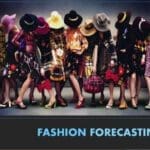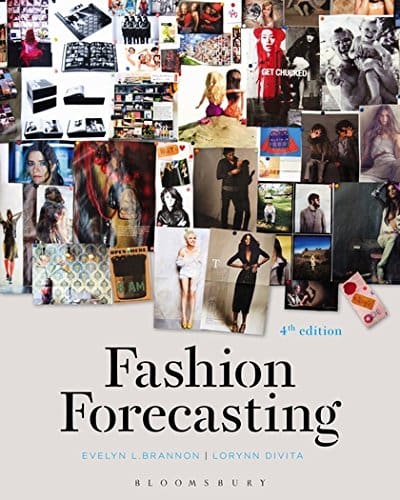
To cope with the ever-changing world, the marketing segmentation and targeting techniques are rapidly evolving from traditional, static, demographic-based criteria towards dynamic, mood, lifestyle and psycho graphic influences. Fashion Forecasting is the prediction of mood, behavior and buying habits of the consumer. It is no longer a question of identifying your customers by age, geography or income, but looking into how and why they buy, based on their mood, beliefs and the occasion.
Fashion is a style that is popular in the present or that have been accepted by a wide audience. But fashion itself is far from simple. Fashion is a complex phenomenon from psychological, sociological, cultural or commercial point of view. Fashion trends are the styling ideas that major collections have in common. They indicate the direction in which the fashion is moving. fashion forcasting look for styles they think are prophetic, ideas that capture the mood of the times and signal a new fashion trend.
Forecasting the future demand for particular styles, fabrics and colors is an important aspect of the fashion industry. Textile specialists work two years ahead to determine the general guidelines for each fashion season. Fashion forecasting is an important activity to ensure that the process of observation related to short and long term planning can be based on sound and rational decision making and not hype. Forecasting can bridge the gap between ambiguous, conflicting signs and the action taken by the design team. “Fashion forecasting combines theories of fashion changes with the process of organizing and analyzing the information and synthesizing the data into actionable forecasts.” (Brannon 2000) Forecasting is a creative process that can be understood, practiced and applied. Forecasting provides a way for executives to expand their thinking about changes, through anticipating the future, and projecting the likely outcomes.
The Fashion Forecasting Process
a) Trend forecasting businesses
French companies based in Paris have traditionally dominated fashion forecasting. Although a number of larger ones are still based in Paris, many with satellite offices around the world, a number of new niche forecasters have emerged offering their own specialties of product and services.
Some better-known trend forecasters include:
.SachaPacha
.Peclers Trend Union
.Line Creative Partners
.Au Studio Promostyl
.Promostyl
b) Consumer research
Manufacturers and retailers may ask consumers directly about their buying preferences. Consumer reactions are compiled and tabulated to find preferences for certain garments or accessories, colors or sizes and so on ,or products to fit specific consumer tastes.
Surveys, by telephone or mail are conducted by publication and market research companies for manufacturers and retailers. These surveys include questions about income, life-style, fashion preference and shopping habits. Customers are usually selected by the market research firm to meet with manufacturers or retailers. In-store informal interview can help researchers obtain information by simply asking customers what they would like to buy, what styles they like that are currently available and what merchandise they want, but cannot find. Because of their close contact with their customers, owners of small stores can often do this most effectively.
c) Colour Forecasting
Stimulating sales is the driving force behind Color Forcasting. Color grabs the customers’ attention, makes an emotional connection and leads them to the product. Even when the basic product stays the same, changing the color gives a sense of something new. Color consultants help companies decide on the right color story to sell the product. Some consultants specialize in advising on color. Others develop color forecasts as part of their overall product development function. Some large companies have departments dedicated to setting color directions for multiple lines. Professional color organizations bring together experts to collaborate on forecasts for industries like women’s wear, men’s wear, children’s wear and residential and non-residential interiors.
d) Textile Development
Frequently, the development of a completely new product is the result of a particular functional need, but often it is driven by the benefits offered by a new fabric. Specialist forecasters make the point that the technology is changing the range of product, as through the ranges of benefits that designers can build into garment product through the textiles used in construction.
e) The Range of shows
The fashion shows: The word here is its widest possible interpretation to refer to the range of organised textile and fashion garment trade shows, operating over the 16 months preceding season. Trade shows, whether yarn, fabric or product have a basic function, which is to sell products.
f) Sales Forecasting
Forecasting is relatively easy, straightforward and accurate for products with long lifetime and steady sales. However, the fashion apparel business is one of the most volatile, because it creates products that are new, highly seasonal or have short lifetimes. In such situations forecasts become increasingly inaccurate. Errors in sales forecasting result in two kinds of losses.
g) Cultural Indicators
In the apparel field, companies need an early warning system so that specific product categories can be fine-tuned to trends within a market segment. While timing is important, an agile and responsive company will be able to capitalize on trends whenever they are spotted; sometimes just as a glimmer far in the future and sometimes as a phenomenon in the building stage. Waning trends are another signal. When some avocation, interest or lifestyle loses cultural power, it is a good time to survey the information landscape for the next big thing.
h) Final Stage of fore casting
The ‘Fashion look’ for the season is therefore the result of a process of development that combines the evolved views of textiles and product trade show, forecasters, designers buyers and ready to wear shows. Like collage, the final picture emerges after various layers have come together. Even though these shows have an impact on some last minute high street fashion buys, their major impact is mainly on reflecting the final views on trends close to the season.
Long-term forecasting
Long-term forecasting is the process of analyzing and evaluating trends that can be identified by scanning a variety of sources for information. It is a fashion which lasts over two years. When scanning the market and the consumers, fashion forecasters must follow demographics of certain areas, both urban and suburban, as well as examine the impact on retail and its consumers due to the economy, political system, environment, and culture. Long-term forecasting seeks to identify: major changes in international and domestic demographics, shifts in the fashion industry along with market structures, consumer expectations, values, and impulsion to buy, new developments in technology and science, and shifts in the economic, political, and cultural alliances between certain countries. There are many specialized marketing consultants that focus on long-term forecasting and attend trade shows and other events that notify the industry on what is to come. Any changes in Demographic and psycgrophic that are to affect the consumers needs and which will influence a company’s business and particular Niche market are determined.
Short-term forecasting
Short-term forecasting focuses on current events both domestically and internationally as well as pop culture in order to identify possible trends that can be communicated to the customer through the seasonal color palette, fabric, and silhouette stories. It gives fashion a modern twist to a classic look that intrigues our eyes. Some important areas to follow when scanning the environment are: current events, art, sports, science and technology. Short-term forecasting can also be considered fad forecasting.
Important of Fashion Forecasting
Forecasting is used in almost every area of business today. Accurate analysis of consumer trends is vital in forming brand direction and development, in the creation of relevant products and services and ultimately in ensuring their success. Trend forecasting has fast become one of the most important weapons over time in a retailer’s competitive market. In a fast moving and crowded marketplace, identifying ‘what’s hot and what’s not’ is crucial in staying one step ahead of the competition.
Essentially, fashion forecasters predict the collection of silhouettes, colors, textures, fabrics, graphics, prints, footwear, accessories that will be the forthcoming trends on the runway and in retail stores from season to season. By examining new, emerging trends across all industries and meticulous considerations they arrive at conclusions to see how they may influence future fashion trends. This includes new developments across the creative industries.
As the pace of fashion has gained momentum over time, the speed of the trend cycle has also accelerated and the demand for trend information has risen. Catwalk shows streaming live, the ability for consumers to ‘shop the look’ before the model has even left the runway and retail sectors obsession with reducing turn-around times has created a necessity within forecasting to constantly supply fresh trend direction. This has not only led to a major growth in the forecasting industry but also seen it change in a very short period of time.
The World Global Style Network, commonly known as WGSN is one of the leading trend forecasting companies globally. WGSN is an invaluable tool that predicts the trends taking hold for fashion consumers around the world.
As the great Coco Channel once said, “Every day is a fashion show and the world is your runway.” Fashion would not be here without fashion forecasting.
Conclusion-The fashion is that in order to improve forecasting methods, a closer relationship with the retailers is required. Even then, other precautions are necessitated to reduce the risk of predicting the volatile Fashion market.
Referance- Fashion forecasting books – Akhil J.K

